Trees for Toronto - Our Urban Forest
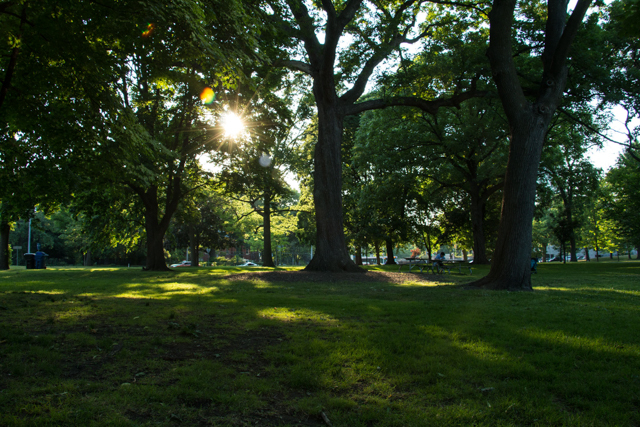
Guest blog by Environmental Visual Communication student Rhi More
On this, the first day of fall, imagine the city of Toronto without trees. I think we can all agree that it’s a pretty strange thought – especially as Toronto is home to just over 10 million of them according to Toronto’s 2013 Strategic Forest Management Plan.
Taking away millions of trees would make our city unrecognizable. It is Toronto’s green space that makes it stand out compared to other cities of similar size. Toronto’s urban forest is worth $7 billion and stores 1.1 million metric tonnes of carbon. Rouge Park, located within the city, is the largest natural environment park in an urban setting in North America and is soon to be Canada’s first ever urban National Park. It will also be the first time a federal park protects agriculture along with nature and culture.
So, besides making Toronto unique, why do we need these trees? Well, the most basic response is that Toronto’s 10 million trees provide us with one of the most fundamental necessities of life – clean air. Trees also improve surface water quality, provide habitat for wildlife and plant species and create spaces for people to enjoy at their leisure whether it’s for exercise or relaxation. Picnic in the park anyone? A city with no trees would make this pastime a lot less enjoyable!
It’s pretty simple really; trees enhance quality of life for everyone – plants, animals, and people.
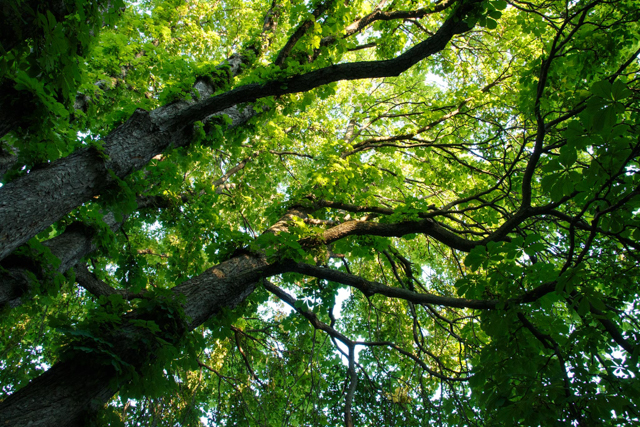
Bringing more attention to trees is what the Royal Ontario Museum had in mind when its botanists and Creative Department partnered with the City of Toronto Urban Forester’s Office to create Trees for Toronto in 2004. The goal of this collaboration was to plant trees in Queen’s Park and to create a tree identification and awareness program that could be replicated elsewhere in Toronto. The end product includes 100 recognition plaques installed on Queen’s Park trees as well as information panels located on the back side of the identification kiosk that interpret the natural and cultural history of the park and images to help recognize the different kinds of trees. These, in-the-Park features are backed up with online fact sheets for Toronto tree species that can be accessed from www.rom.on.ca/trees by clicking on the “fact sheets” link.
I decided to check out this ‘urban arboretum’ for myself and try my hand at tree identification.
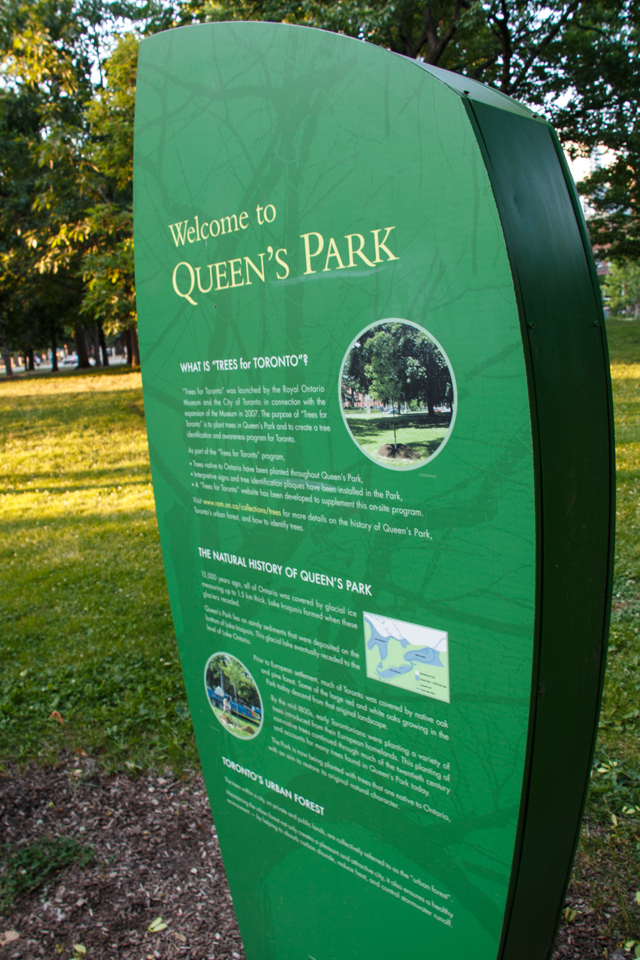
As I walked into the park from the southeast corner, I came across plaques that describe the Trees for Toronto project as well as information such as the natural history of Queen’s Park.
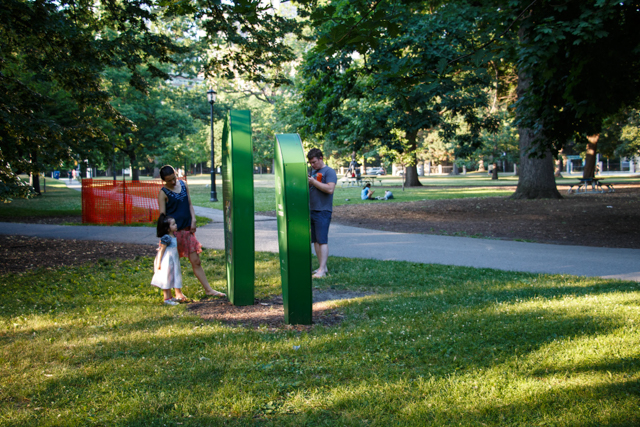
I kept walking along the path into the park and came across an information panel that has a chart for recognizing trees throughout the four seasons – by looking at the flowers, fruits, leaves, bark, and branches.
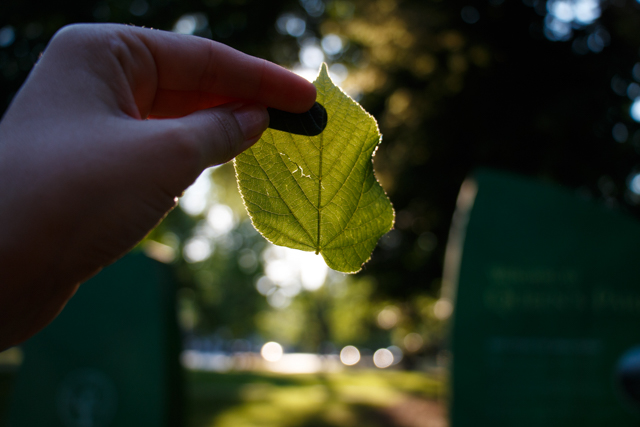
I found this leaf on the ground under a tree with very different looking leaves. I brought it to the identification kiosk and found out that it’s from the little-leaf linden which is native to Europe but commonly used in North America as an ornamental tree because early settlers remembered its pretty and fragrant white flowers from their homelands.
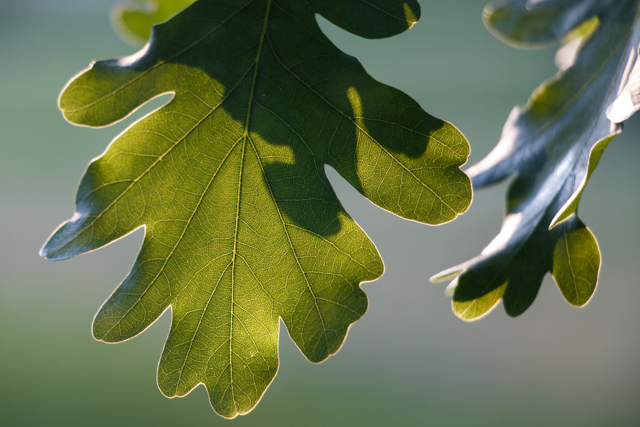
I resisted looking at the plaque in the tree and instead used the identification kiosk to identify this tree using one of its leaves. It was easy to identify it as an English oak due to the shape of the leaf. Leaves are often so unique that it is tempting to rely on them for identification, but it’s important to look at the bark and branches so that you can identify trees in all four seasons.
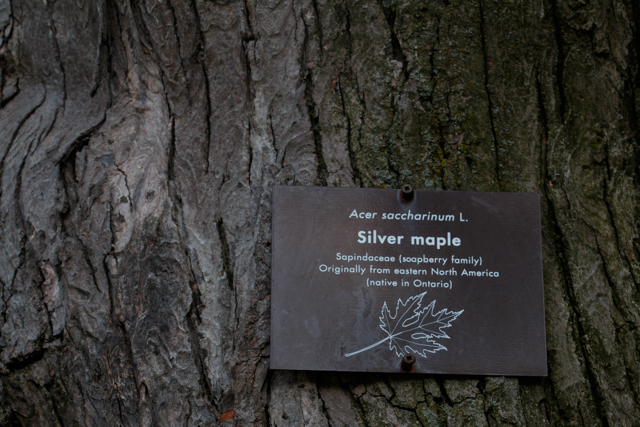
Many of the trees in Queen’s Park have these identification plaques. Trying to find the plaques is like a scavenger hunt. Queen's Park is home to more than fifty species of trees and twenty of these are native to Ontario. Silver maple is one of the twenty that originated in Ontario.
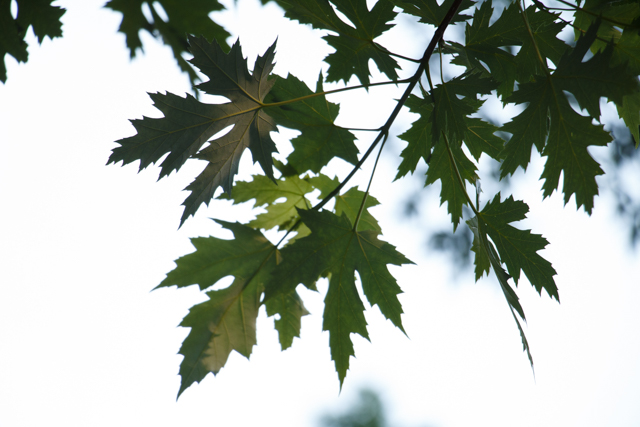
The leaves of the Silver Maple are easy to distinguish as maples by their lobed leaves with veins that join like the fingers on your hand. It differs from the sugar maple leaf featured on the Canadian flag because it has a narrow “waist” and silvery undersides.
Wandering around Queen's Park at dusk and looking up at the trees through sun-touched leaves was a very enjoyable experience. I now appreciate more than ever that this signage is there for anyone to use and I loved seeing the little kids excitedly comparing the leaves they had found to the images on the identification kiosk. It is truly outdoor, accessible learning at its finest. Check it out the next time you walk through Queen's Park!
